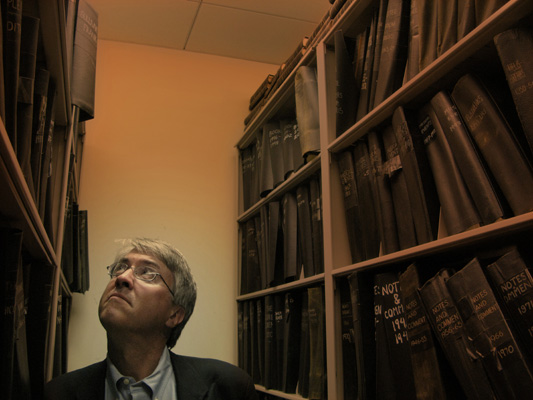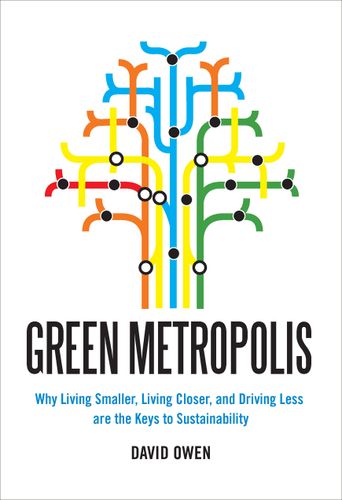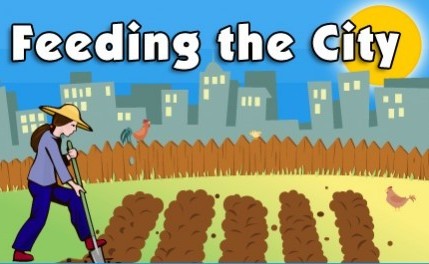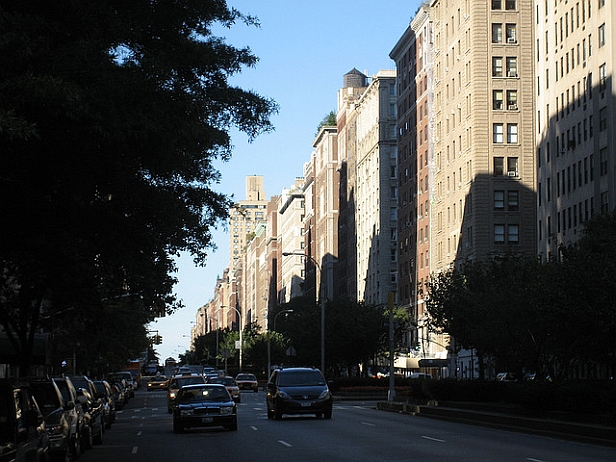 David Owen read all these books so that you’d only have to read his.Forget the back-to-the-land agrarian dream that environmentalists used to aspire to. The greenest place to live is a dense city like New York, David Owen argues in his 2009 book Green Metropolis: Why Living Smaller, Living Closer, and Driving Less Are the Keys to Sustainability. The New Yorker staffer writes that “what you actually do when you move out of a city is move into a car.”
David Owen read all these books so that you’d only have to read his.Forget the back-to-the-land agrarian dream that environmentalists used to aspire to. The greenest place to live is a dense city like New York, David Owen argues in his 2009 book Green Metropolis: Why Living Smaller, Living Closer, and Driving Less Are the Keys to Sustainability. The New Yorker staffer writes that “what you actually do when you move out of a city is move into a car.”
But he also says that creating dense, green communities won’t be easy. What you’re more likely to get is “density light” and “decorative” public transit that can actually encourage sprawl. We spoke recently about the book and the elusive quest for greener cities and climate solutions.
Q. I have to admit that your book’s premise — that walkable urban living is less energy-intensive than rural living — didn’t strike me as very provocative. People working for cleaner energy and mobility seem to understand this already. Did you find environmentalists who still needed to be convinced of this?
A. It’s still kind of an alien concept to the average person. Even people who have reluctantly come to accept the idea that density has environmental value think in terms of density light.
 Q. You argue that it takes density on the level of Manhattan or Tokyo to really allow us to make a dent in climate pollution. Why is that?
Q. You argue that it takes density on the level of Manhattan or Tokyo to really allow us to make a dent in climate pollution. Why is that?
A. Americans have shown that if there is any possibility of driving, they will drive. Seventy-seven percent of Manhattan households and 54 percent of New York City households don’t own even one car. That is completely off the scale in the rest of the United States, where we now have more registered passenger vehicles than licensed drivers. And New Yorkers who do have cars use them in very different ways from other Americans. In Manhattan, they use them to basically escape from Manhattan. In the outer boroughs, they use them infrequently to do things like grocery shopping.
So in a place like Portland, Ore., you get a lot of people talking about light rail, but if you look at the city from the air or from the ground, you see it’s still a very heavily automobile-dependent city. There’s this sort of decorative public transit, but it’s not the way most people actually move around. To get to where transit does work, and to where it’s more energy efficient than driving, you really have to achieve pretty significant density. The threshold is something like seven households per acre, but that’s the absolute minimum.
I don’t think that everybody ought to move to Manhattan. It obviously isn’t going to happen. But everybody who talks about public transit needs to think about why there just aren’t that many places where public transit actually works, where it’s efficient, and where it has a lot of riders.
Q. Transportation Secretary Ray LaHood says the federal government is finished funding auto-centric plans at the expense of walking, biking, and transit. But he’s careful to talk about transit in terms of “options” — Americans want options other than driving. On the other hand, it sounds like you think we need to make driving as miserable as possible.
A. If transit’s going to work, we see over and over again that that’s what has to happen. Even in Manhattan, where street cleaning rules require people to park on one side of the street on different days of the week, you have people who build their whole lives around being able to double-park their car when street cleaning is done.
So even in a place where you can get around by foot or transit, there are still people who will go to extraordinary lengths to have the personal mobility of a car. Having a car is an extraordinarily appealing thing, and you don’t make a dent in [car ownership] just by offering public transit, especially in a place like Kansas City, where I grew up. There was a bus system, but you were a nut if you tried to go anywhere on it. If you had any possibility of getting somewhere in a car, you were going to do it. Or in Arizona — a light rail system doesn’t do anything for Phoenix. It has some kind of minimal transit system, but I’m sure it’s more efficient to go around in your car.
But even something like transit cuts both ways. When cities talk about adding transit, they talk about trains that extend even farther out. That compounds the problem — you’re not making it easier for people to live in dense, urban cores, you’re making it easier to live far away and get to work. There are all these unintended consequences when you do that.
In Connecticut, there’s lots of talk about building high-speed rail between Bridgeport, Hartford, and Springfield, Mass. There’s this horribly clogged Interstate 91 that runs between these places. But if we get high-speed rail, we need to also plow up six lanes of I-91 to maintain the level of traffic congestion that pushes people onto the train and keeps them out of their cars.
What we have to do instead is somehow contract our sphere of operation.
Q. So how do those places that aren’t Manhattan get started?
You start with centers of density and try to make them denser and work out from them. I used Manhattan as an example both for the “Whoa!” shock factor, but also seriously as a place where transit works and where people actually walk. If you want to see people outside, go to a city. New York City is one of the very last places in the United States where walking is a primary mode of transportation for many people.
At college campuses, you see the same thing. Students live in small spaces, and they’re much less dependent on cars because everything’s happening right there.
There’s also suddenly this growing interest of people my age and older — I’m 55 — who think, “Our kids are gone. What are we doing in this huge house? We want to live in a place where we can walk and there’s a lot of interesting stuff going on.”
Q. I hear that a lot from green urbanists — that there’s this influx of young adults and of seniors back into cities. With young adults, it seems more apparent. But do you think retirees are really moving to cities after spending their adult lives in drivable suburbs?
A. I would assume it’s not happening on any terrifically large scale. But AARP would be a good ally for environmental groups, because urbanism has so many advantages for older people.
When we lived in New York, there was an older lady in our building who lived independently until she died, because she could walk everywhere — the store, her doctor, the hospital, the movies. She could take cabs when she didn’t want to walk. Here in Connecticut, I play bridge with some old ladies, and all of them live in fear of the day when they lose their driver’s licenses, because if you live in the suburbs, without a car you can’t do anything by yourself.
On the other hand, it’s hard to beat the suburbs when you have little kids. When you look at young families, the critical environmental
issues are all the things like crime, [bad] schools, dirt, and noise that drive them out of dense, urban places.
Q. So those quality-of-life challenges become indirect keys to sustainability?
A. Yes. But somehow carbon still has to be priced in a way that encourages us to use less of these things. If you do that, our machines will become more efficient, because they’ll have to. And then you have to keep tightening the screws [on carbon emissions]. It’s like an orthodontist tightening teeth once, and as they move closer together, you have to keep tightening them. That takes something beyond political courage. I don’t know what it takes. We have not seen it yet, I’ll say that.



